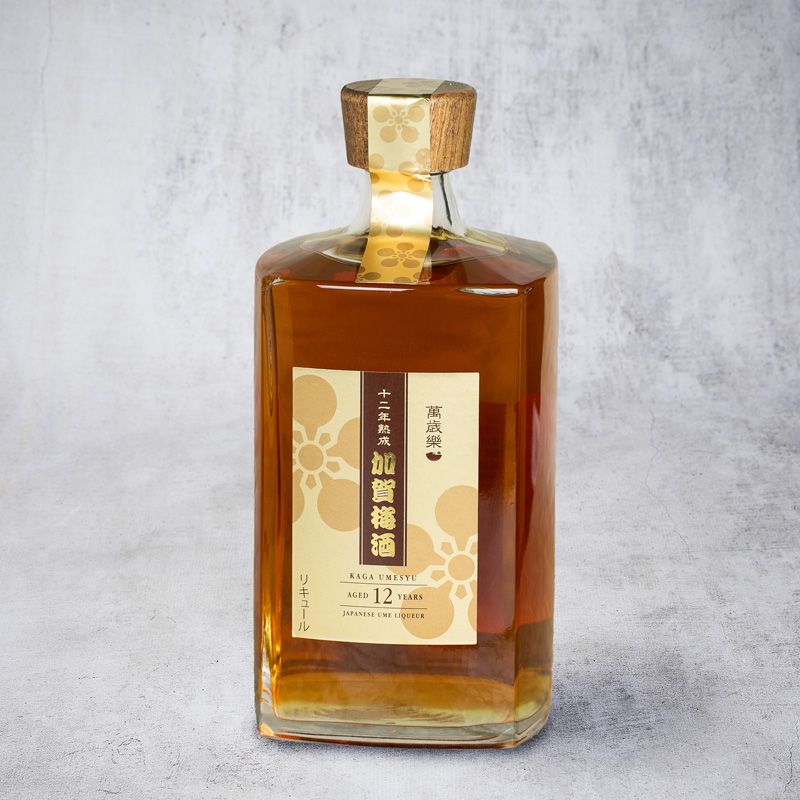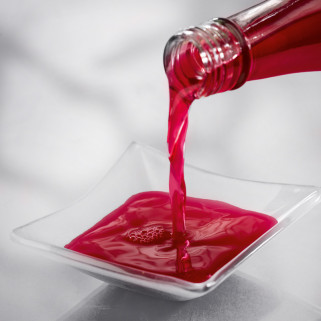Preparation is then racked, without pressing plums, simply by gravity so as not to crush the stone.
Alcohol is then aged in vats for another 18 months; no wooden barrels are used in order to keep only pure flavor of the Benisachi Ume. Kobori Shuzo is one of the most renowned and oldest sake breweries in Ishikawa Prefecture, on the island of Honshū. Company, founded in 1716, is not only known for its great sake, but also for its fantastic umeshu.
Kobori Shuzo has been owned by the same family since its inception. Thus, Mr. Kobori represents the 16th generation of brewers. In the middle of the Meiji era, they created "Manzairaku" brand. Manzairaku means "always be happy".
Manzairaku's Kaga umeshu is made from Japan's famous and luxurious "Benisashi" variety Ume plums, sugar crystals, distilled alcohol and the highly regarded natural water of the Tedori River from the sacred Hakusan Mountain in Ichikawa Prefecture. It is said that the water from this spring was ennobled for over 100 years on the top of Mount Hakusan, before flowing down the valley by the river. Ume is often called plum, but botanically it is an apricot.
Benisashi Ume variety is used for Kaga Umeshu. This particular variety grows only in Kanazawa City (Ishikawa Prefecture) and in the neighboring Fukui Prefecture. "Beni" means "red" and "sashi" means "brightness". Name therefore represents the deep red and bright color of ripe Ume. Benisashi 'Ume contain more amino acids than other Ume species. Due to the higher proportion of amino acids, Benisashi Ume has a milder aroma and a mellow, umami taste. This variety is also used to make high quality umeboshi plums. It is difficult to cultivate and has a lower yield than other ume because branches only bear fruit once every three years. Benisashi variety is therefore very rare.
This 12 years long matured umeshu tasting reveals a drink with a strong honeyed and amber color. Aromas of ripe apricot, leather, very ripe plums dominate followed by a complex aromatic procession evoking tobacco, cocoa, vanilla and honey.
On the palate, we are facing a real Umeshu which lets us discover a full and round mouth, a slight astringency, notes of maple, bitter orange, chestnut honey, candied date, currant...
We appreciate this wonderful acidity that makes you salivate and a fabulous balance between sugar, bitterness, and acidity.
An insider's umeshu that you will appreciate as a digestive, served at temperature, with dried fruits.
This Umeshu is enough by itself.



































